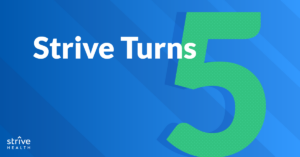Strive Health Adds a New Chapter to Risk-Stratification Methodology
Author : Strive HealthBy the Strive Health Team
Strive Health didn’t write the book on risk stratification, but we’re proud to be adding a new chapter.
A longtime tool for population health management, risk stratification is the process of categorizing patients by their health status and directing care and support based on the healthcare needs of that population. Public health officials used risk stratification to determine how to prioritize COVID-19 vaccine distribution during the pandemic. Likewise, providers may apply risk stratification when deciding which patients could benefit from earlier or more frequent cancer screenings.
“It’s really about providing the right resources for the right patients,” explained Dr. Bhargavi Degapudi, Nephrologist and Strive’s Senior Vice President of Clinical Transformation and Performance.
When it comes to risk stratification, there are many models to choose from. Some risk stratification algorithms are already embedded in electronic health record software or are available in health analytics packages. But rather than use a tool designed for the general population, Strive created its own model specifically designed for kidney patients.
Strive’s model examines a variety of patient information, including medical conditions, medications, lab results, healthcare usage, behavioral health, demographics and social determinants of health. We take the process one step further by also incorporating predictive analysis to determine the risk of not only kidney failure but also heart attack or stroke, since cardiovascular issues are common among kidney patients.
All of that data is then aggregated and evaluated in Strive’s proprietary technology platform, the CareMultiplier™. Powered by machine-learning algorithms, CareMultiplier™ makes sense of massive amounts of data from hundreds of sources, providing valuable insights to care teams.
The platform delivers risk scores, end-stage renal disease crash predictions, admission and readmission predictions, disease progression predictions and even cutting-edge artificial intelligence algorithms that identify patients whose kidney disease may be undiagnosed.
“The information gives us a window of opportunity to intervene and change the path of that patient’s journey,” Dr. Degapudi said.
However, Strive’s approach to risk stratification isn’t solely data-driven. “We don’t want to take away the art of medicine,” Dr. Degapudi said.
Instead, the information generated from the CareMultiplier™ is meant to serve as a guide, with providers ultimately using their clinical judgement to determine what type of care is appropriate.
For patients, the benefits are numerous. Most are accustomed to the traditional, more reactive approach to care, which usually involves the patient alerting their doctor once a problem has already arisen. Under the Strive model, information is analyzed upfront, giving providers the opportunity to be proactive – particularly with those patients who may suffer from a lack of access to care. This results in more upstream interventions, preventing the patient’s disease from advancing while also helping them to avoid other complications that can occur when their condition isn’t being actively addressed.
Strive’s approach is already yielding strong results. We’ve reduced hospitalizations among the highest-risk patients by 49%1 and reduced 30-day hospital readmissions by 36%2. We’ve also seen a 67%3 increase in optimal starts of renal replacement therapy, which can improve patient experience and survival rates.
What’s good for patients also tends to be good for health systems and payors. Reducing hospitalizations and hospital readmissions avoids certain costs and improves patients quality of life. It also indicates that patients (with support from their providers) are managing their disease effectively, without requiring more critical care. Taking a proactive approach also reduces the risk of infection, critical illness or complications with associated conditions, which are not only expensive to treat but can lead kidney disease to progress.
“It is imperative that healthcare moves to a value-based care journey,” Dr. Degapudi said. “We can’t sustain healthcare costs the way they’re going — and high-cost care does not always equate to better care.”
Strive is aiming for nothing less than systemic transformation and is working with nephrology practices, health systems and payors to revolutionize the way kidney care is delivered. Risk stratification is a foundation for this movement.
“This is life-changing and gratifying,” Dr. Degapudi said. “I am able to help patients before they even realize they need help.”
(1) Compares the all-cause hospitalization rate for Complex patients who are engaged in the Strive program to a historical benchmark. “Complex” is the highest-risk tier in Strive’s composite risk scoring model, which uses factors such as the Charlson Comorbidity Index, CDC Social Vulnerability Index and prior hospital visits.
(2) Compares the 30-day hospital readmission rate for patients enrolled in a Strive health system ACO program to a three-year historical benchmark.
(3) Compares the rate of optimal starts for patients enrolled in the Strive program to that of unenrolled patients across all active Strive markets. Optimal starts is defined as a planned start of renal replacement therapy by receiving a preemptive kidney transplant, initiating home dialysis or initiating in-center hemodialysis via AVF or AVG.








